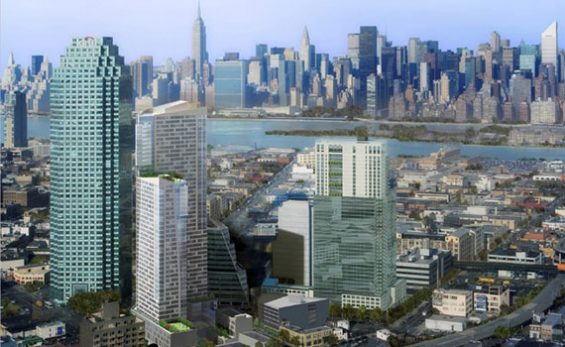
Future development
Nov. 9, 2016 By Hannah Wulkan
The Long Island City Partnership has released a plan that aims to promote the construction of office space, bolster the opportunities for cultural institutions and connect the sub-districts of LIC together.
The partnership released phase one of its “LIC Comprehensive Plan” Monday, which synthesizes studies of the LIC area and puts forward a number of recommendations to help shape the development of the neighborhood as it continues to grow.
“This Comprehensive Plan presents recommendations that aim to inform the neighborhood’s future development to promote an active, mixed-use, economically and culturally vibrant Long Island City,” said Chair of the Long Island City Partnership Board of Directors and Executive Vice President of Silvercup Studios Gary Kesner in a statement.
The report looked at the broad historical boundaries of LIC, spanning from north of Newtown Creek to Astoria Boulevard, and from the East River to Steinway Street (on the north side of Sunnyside Yards) and 43rd Street (on the south side of Sunnyside Yards).
It then outlined 11 key findings compiled from many studies that had been done of smaller pieces of Long Island City, as well as from conversations with various business owners and stakeholders throughout the neighborhood.
It noted the mixed-use character and central location of LIC as the main assets of the area, and stated that while it was a very attractive area to growing businesses, there were unmet demands for commercial space, making it hard for businesses to continue to move in to the area.
Among the other findings, the report also showed that while a large portion of the population had increased income and educational backgrounds, there are still persistent pockets of poverty.
The report went on to outline nine specific recommendations for the future, which were:
- Make incentive programs work for businesses that need and want to be in LIC, and explore creative ways to build more space for both industrial and commercial uses.
- Work with the City to incentivize office construction to meet demand and reduce pressures on industrial and cultural space.
- Capture and retain growing, entrepreneurial businesses in LIC to anchor local job creation.
- Increase opportunities for cultural institutions and artists to maintain and operate active, permanent spaces in LIC.
- Develop a strategy to foster a biotechnology, life sciences and technology-related industries cluster in LIC.
- Work to relieve commercial parking strain and maintain vehicular flow for efficient business activity.
- Work with mass transit agencies to update routes and frequencies within LIC.
- Bridge neighborhood barriers and improve connections between sub-areas of LIC.
- Maximize economic benefits for LIC residents and businesses.
“Implementing these recommendations will impact all sectors and help to maintain and foster an equitable, mixed-use, culturally-robust, fullservice community in LIC,” said President of the LIC Partnership Elizabeth Lusskin in a statement.
The recommendations will begin being implemented during phase two of the Comprehensive Plan, which will focus in on specific issues and solutions, though the report does not say when phase two will begin.
“At a time when many communities are resisting forces of change and responding defensively to gentrification, business and community leaders in Long Island City are proactively taking charge of their future with a plan that capitalizes on market forces to achieve inclusive growth,” said President and CEO of the Partnership for New York City Kathryn Wylde in a statement.
LIC Comprehensive Plan by Queens Post on Scribd
2 Comments







All but 3 of 9 recommendations use the words business and/or industry. To those living here, be warned what this neighborhood is oriented towards.
Yes, the same as the area has been oriented towards for the past 100+ years.
In case you haven’t noticed, the large residential developments are the newcomers.